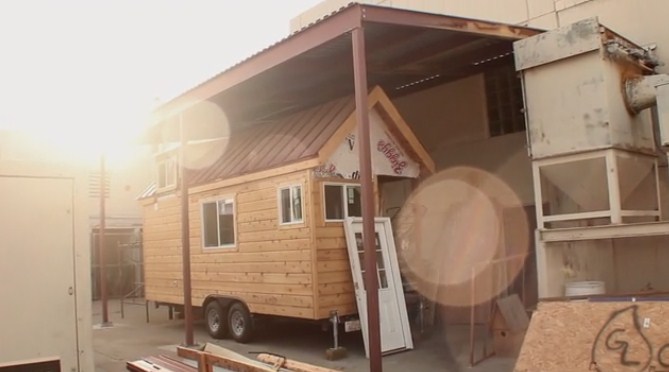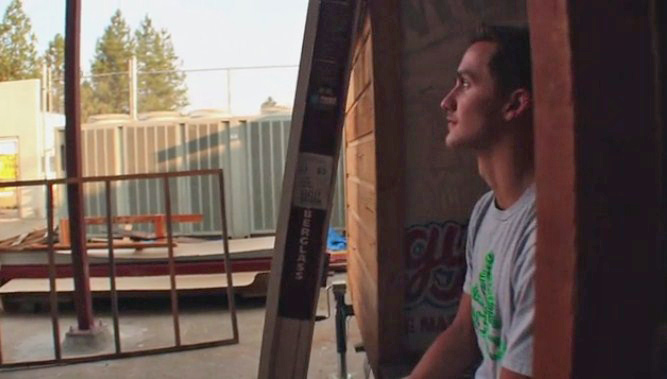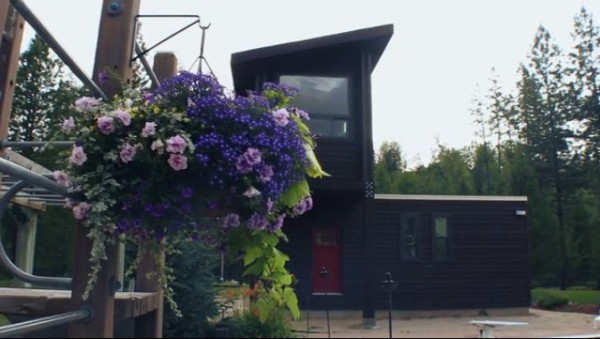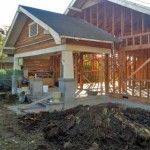I have a close childhood friend serving in the United States military, who is currently on a tour in Afghanistan. In that area of the world, as the children play in the yard in front of the house, a watchful parent stands guard with a machine gun. Here in the United States we have had peace inside our country for so long that survival isn’t a concern for us, and we are able to focus our attention on things many areas of the world are unable to consider. As a result, due to the safety we enjoy, we have a greater awareness of needs in the world, with collective talent and interest to meet all of them.
The result is possibly the most altruistic generation the world has ever seen. Also, for the first time in American History, people aren’t thinking about keeping up with the Joneses, and how to live in excess, but how to eliminate the excess, simplify, and direct resources towards doing as much good as possible instead. The timing of this paradigm shift is impeccable.
In my experience, The American Dream is not dead, but it is fading fast. As our country adopts more and more socialist ideals, trades become more specialized, which raises costs that in turn bar the way to home ownership, and locks people in to their current social class. In high school we were told that The American Dream was alive and well, and that our goals were reachable. Then we graduated and learned that life is really hard. Much harder than we thought, and progressing towards our goals and passions was much slower than we anticipated, and many, many rapidly found themselves stuck.
Stuck financially, creatively, and emotionally torn as they compared their current state to what they have been told about The American Dream. They saw the disparity between the two and asked, “What am I doing wrong? Have I been lied to? What is wrong with me?” I think the reality of the dream compared to real life causes a great deal of frustration across our society today. Too often people feel like they are stuck.
Minimalist Houses: Maximum Living
I see tiny houses as the answer to avoiding getting stuck. They are the best opportunity for many to keep their goals reachable, to buy them time as they answer important life questions, and to revive The American Dream. Tiny houses can enable people to avoid a 30-year home mortgage, and direct enormous amounts of their income toward living into the change they need to feel free. That includes avoiding debt, and having time to work on their passions, and direct their free income to reaching what they really want in life.
Tiny houses can be what enable people to have access to change in their lives, to focus on what they need in life to feel happy. Its about accessing an ideal lifestyle, which surprisingly enough, has little to do with how large your house is.
Altruistic and creative people can use the freedom granted by tiny houses to follow their passions and meet the needs in the world, embracing the change that they ache for by doing what they feel driven to do. Tiny houses are the most excellent solution to keeping The American Dream alive.
In the last eleven years since I graduated high school, I have spent an average of $650.00 a month on rent. Most of that time I lived with roommates. Adding that up, I have directed $85,500 to rent since I graduated. That is the status quo (as a minimum) for what we are expected to pay simply to have a roof over our heads. I am currently working with the team behind The Collaborative Tiny House Project, that is developing a tiny house building program to implement as a curriculum in schools across the nation. The goal is to reach youth at an early age to inform them that in their free time, they can self-construct a tiny house before graduating high school, and have something chic they can live in while they go to college or enter the work force. I see them as ideal housing solutions of single adults, young families, and retired couples. But what I am learning being involved with this project, is that really anyone may have an interest in owning a tiny house. The purposes and reasons why people want them, and why they are practical are endless.
How Affordable Are Tiny Houses?
A high school in Eastern Washington developed a tiny house building program, and to cover the base materials (not including appliances), their costs came in around $15,000. Using reclaimed materials for framing, siding, roofing, windows, and doors, it is possible to cut out $12,000, but you have to calculate the time it takes to salvage all of the materials you will be using. Regardless, it is going to cost $3,000 minimum to cover the necessary electrical, plumbing, and insulation that won’t fit under the reclaimed materials blanket. So absolute minimum, not including labor, a tiny house can be built for between $15,000-$3,000 if you do everything yourself.
So how much are they if someone else builds them? They are expensive enough for the builders to make a living wage, plus a little more. The average cost per square foot to build a house differs greatly depending on where you live. In low-income areas it can be as low as $75.00. Expensive areas of the country are around $240.00. However, most areas are around $120.00 per square foot (if it isn’t built on prime real estate). A 250 square foot tiny house that costs $15,000 comes out to $60.00 per square foot, which is half of the cost of building a house. If you purchase a tiny house from a company, you will likely pay at least $60,000, which comes out to $240.00 per square foot—the same as a high-end residence on prime real estate.
As a member of The Collaborative Tiny House Project, my team is aware of these figures, and we have concluded that when it comes to affordability, the best scenario is for people to self-construct their own tiny house. The barrier then becomes access to knowing what to do, and how to do it, which is why my team is also developing a day-to-day program that when followed, will produce a tiny house within one year. This tutorial series will clearly explain the most intimidating aspects of constructing a tiny house so that anyone can do it after work during their free time. The New York Daily News reported last year that on average, Americans watch five hours of television a day. Using our tutorials, it is our hope that people choose to use that time to build themselves tiny houses instead. Our primary goal is to increase the access to the necessary information to make tiny house ownership an open opportunity for all.
Are Tiny Houses For Everyone?
I think that tiny houses can be built to satisfy anyone’s tastes, but that doesn’t mean that that they will be used as the primary or sole residence. Through highly creative design, really any space can be planned in such a way that it carries appeal. What sets tiny houses apart from the rest of the construction world is how much freedom has been granted. More and more laws are passed for the construction industry every three years, and individual counties have the choice which laws to adopt and enforce.
Requirements for construction are becoming increasingly expensive and unnecessary. For example, it has already been written into law that residences should be built with fire sprinkler systems. (Page 62, Section R313. Automatic Fire Sprinkler Systems International Residential Code). Such systems are so expensive to install that it makes it impossible for people to build. Many counties choose not to enforce this law (because it is nonsense), but someday it and many others like it may be enforced, which would eliminate the possibility of home ownership for many. What is great about tiny houses is that sensible construction techniques can and are employed, and those that are nonsense can be ignored, which keeps things affordable.
Upon analyzing tiny house ownership, the negatives and positives are self-evident. Personally I see them as a great starter home with my young family, and I can imagine myself living in one when I am older, but the time between those two stages of life is where I would like to own a normal house. Living in a tiny house for the next ten years makes achieving that much more feasible, and doing so entirely debt free.
Even long term, I see the tiny house movement as a positive thing for our country, and am learning that they will do just as much good here in the United States, as every other country in the world. Empowering people to live the lifestyle of their dreams is really what the tiny house movement is all about. Come and learn more on our Collaborative Tiny House Project’s Kickstarter Page or see the video below:



 DIY Sustainable Landscaping on a Shoe-string Budget?
DIY Sustainable Landscaping on a Shoe-string Budget? Midori Uchi – Canada’s First Net-Zero Home is Classy, Sassy and Green Dizzy
Midori Uchi – Canada’s First Net-Zero Home is Classy, Sassy and Green Dizzy Midori House: Couple Transforms Century-Old Bungalow into a Passive House, Energy Bills Drop by 80%
Midori House: Couple Transforms Century-Old Bungalow into a Passive House, Energy Bills Drop by 80%